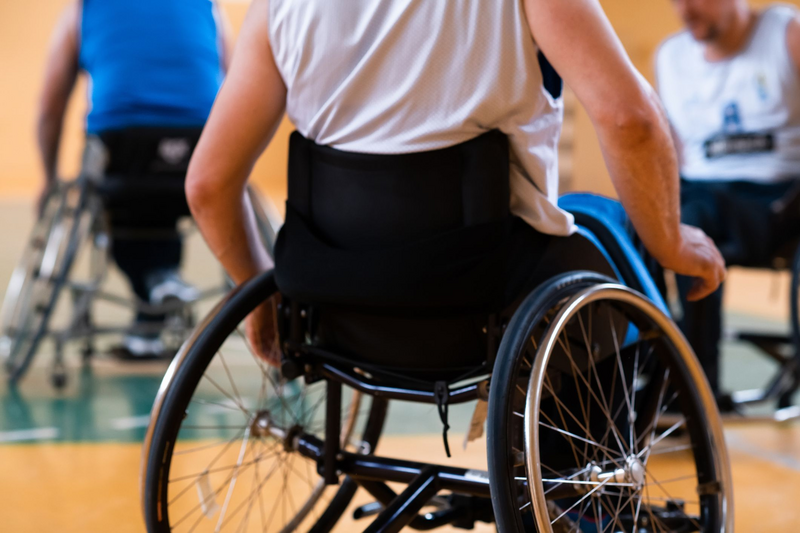Adaptive pickleball (or wheelchair pickleball) is a sport growing just as fast as standard pickleball. Although adaptive pickleball follows many of the same rules of pickleball, there are some rule variations that are specific to wheelchair pickleball games. If you do not see a rule variation from the list below, assume that the standard pickleball rules apply.
Section 1: Bounces
Players who use wheelchairs may allow the ball to bounce twice before returning the ball. The second bounce can be anywhere on the playing surface.
Section 2: Court size
The recommended court size for wheelchair play is different than a regular pickleball court. The recommended court sizes are:
44 feet wide x 74 feet long.
For stadium courts: 50 feet wide x 80 feet long.
The recommended size for wheelchair play does not mean that players cannot play on a standard-size pickleball court, but USA Pickleball recommends that the ideal game be on the above-sized courts.
Section 3: Players using wheelchairs
Section 3 of the official pickleball rules defines a player using a wheelchair as: “Any person, with or without a disability, who plays the game in a wheelchair. The wheelchair is considered part of the player's body. This can be a player with a disability or anyone that wants to play in a wheelchair.”
Section 4: Serving
At the moment the ball hits the paddle of the server during the serve, the server’s rear wheels of the wheelchair must be on the playing surface behind the baseline. Both wheels must be behind the baseline and in between the imaginary extension lines of the sideline and centerline.
Section 7: Faults
The only additional fault beyond what is already in the standard pickleball rules is about the bounce: Because players in wheelchair pickleball can allow the pickleball ball to bounce twice before hitting the ball, it will then be a fault if they allow it to bounce three times.
Section 9: Non-volley zone, or the kitchen
There are quite a few differences in rules relating to the non-volley zone (NVZ), or kitchen, between standard pickleball and adaptive pickleball.
In adaptive play, a player using a wheelchair may allow their smaller, front wheels to touch the NVZ during a volley. For all other rules, “in the non-volley zone” does not include the smaller, front wheels, because those wheels are allowed to be in the NVZ.
A player or object within the non-volley zone may not have contact with a player in the act of volleying.
A player who is volleying may not allow the momentum of the volley to take them into the zone, including anything they are touching (including an object or their partner).
If the rear wheels of a wheelchair are in the NVZ, the player must re-establish both rear wheels behind the kitchen line before volleying a ball.
Section 12: USA Pickleball sanctioned tournament rules
There are a number of event categories for adaptive wheelchair pickleball, including:
Wheelchair singles.
Wheelchair doubles.
In this category, both partners will be in a wheelchair.
Men’s doubles.
Women’s doubles.
Mixed doubles.
Wheelchair/standing doubles.
In this category, one partner will be in a wheelchair and the other will be standing.
Men’s doubles.
Women’s doubles.
Mixed doubles.
The rules of adaptive wheelchair pickleball
Learning the rules of adaptive wheelchair pickleball is not much more difficult than learning the rules of standard pickleball play. You just need to remember a couple of extra rules, and most of them are related to where the wheels are placed.
Whether or not you have a disability, learning wheelchair pickleball can be a fun variation of the game you love so much. Learning the rules will allow you to be ready next time you are out on the court.

